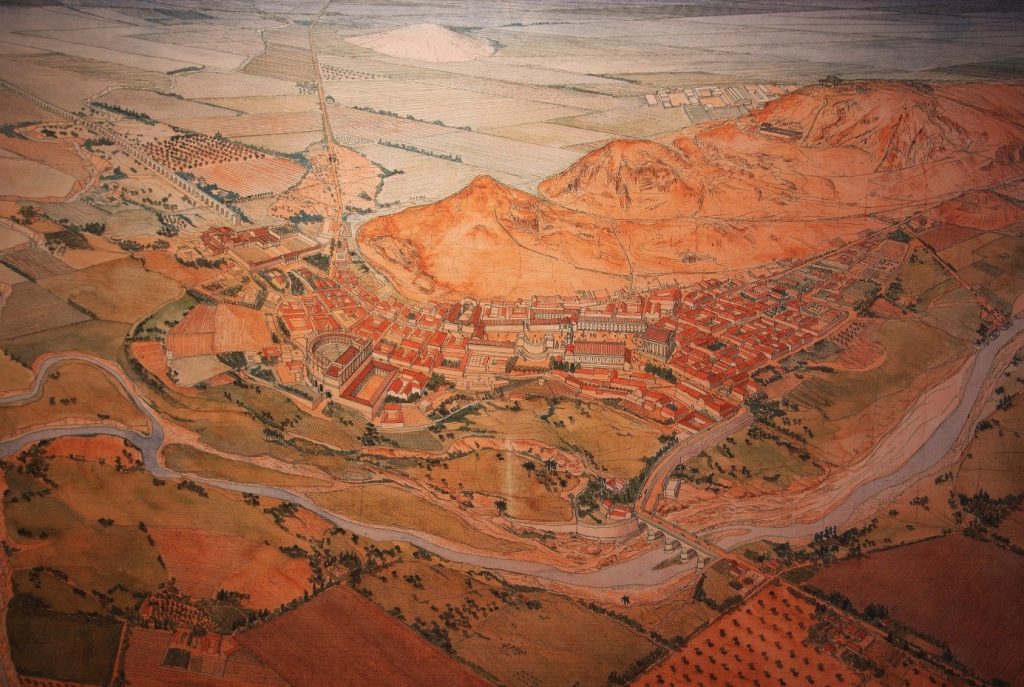Simitthus/Chimtou. The city of the "numidian marble"





Ancient Simitthus (modern Chimtou, Tunisia) is located in northwestern Tunisia near the Algerian border. Situated on the left bank of the Medjerda River, the city was part of the former Roman province Africa Proconsularis for over 500 years. The site is most famous for its important quarries of yellow Numidian marble. Therefore, during the old excavations and former projects, the marble became the focus of the archaeological research conducted jointly by the Tunisian National Heritage Institute (INP) and the German Archaeological Institute (DAI) since 1965. In 2009, coordinated by Philipp von Rummel (DAI), Mustapha Khanoussi until 2012 (INP), and Moheddine Chaouali (INP), investigations were resumed, addressing new research questions and verifying the results of the old excavations. The investigations involved geophysical research and excavations in the areas of the forum and the so-called “Kaiserkultareal,” probably a 1st century CE temple for worshipping the emperors. Knowledge of the antique city was furthermore considerably enhanced by new research of the Medjerda Bridge and the trading networks of the city and its hinterland as well as additional research conducted by colleagues. Under the supervision of Jan Martin Klessing, huge restauration processes are being carried out in many areas of the former city, including the reconstruction of the temple podium and the Roman and Arabic houses in the forum zone.
The site Simitthus, however, has much more to offer than the quarries and the mentioned excavated areas. As a major Roman town, it has several temples, three public squares, baths, nymphaea, a theatre, an amphitheater, an aqueduct of 14 km length, and a labor-camp for the imperial administration, prisoners, and workmen. Furthermore, it is one of only few North African cities that witnessed a settlement ranging from the Iron Age to the Middle Ages.
Recent excavations and radiocarbon dates have revealed the earliest traces of settlement at Chimtou hitherto, dating back to the 8th century BCE. During the prelude of the third Punic war, Numidia’s king Massinissa seized the extremely fertile region of the Medjerda valley, the Campi Magni, from Carthage. The monument at the summit of Djebel Bourfifa was most likely erected during the reign of his son, Micipsa (148 – 118 BCE). It was the first building to use the local yellow marble and was part of a group of at least three trophy-monuments that celebrated the Numidian territorial expansions. Simitthus became part of the Roman province Africa Nova in 46 BCE and was granted the status of a colony under Augustus named Colonia Iulia Augusta Numidica Simitthensium. After almost 500 years of Roman rule, the region became part of the Vandal Kingdom in 439 CE. It was reintegrated into the Eastern Roman Empire in 533 CE under Justinian but then conquered by Arab troops in the second half of the seventh century. The latest archaeological traces date from the 11th century CE.
Today, Chimtou is merely a small village, relatively far away from the political and economic hotspots of modern Tunisia. A real highlight of the city is the museum, located directly on the excavation site. Opened in 1996, it displays the most prominent artefacts found within the city and its surroundings. These include the famous building inscription of the roman bridge built by Trajan and his soldiers and a reconstruction of the monument at the Djebel Bourfifa.
Members

Prof. Dr. Philipp von Rummel
DAI Berlin Head Office
generalsekretaer@dainst.de

Dennis Mario Beck
University in Bonn
dbeck@uni-bonn.de
Figure Captions
Fig. 1 Topographic map of Simitthus/Chimtou [map of Institut national du Patrimoine (INP)].
Fig. 2 Reconstruction drawing of the Roman city of Chimtou [Painting by Jean-Claude Golvin].
Fig. 3 Hellenistic Monument and ancient city center of Chimtou [photo by J. Linstädter].
Fig. 4 Iron Age necropolis and roman forum of Chimtou [photo by J. Linstädter].
Fig. 5 Teaching the trade of stonemasonry to locals within the framework of the Chimtou project
[photo by J. Linstädter].